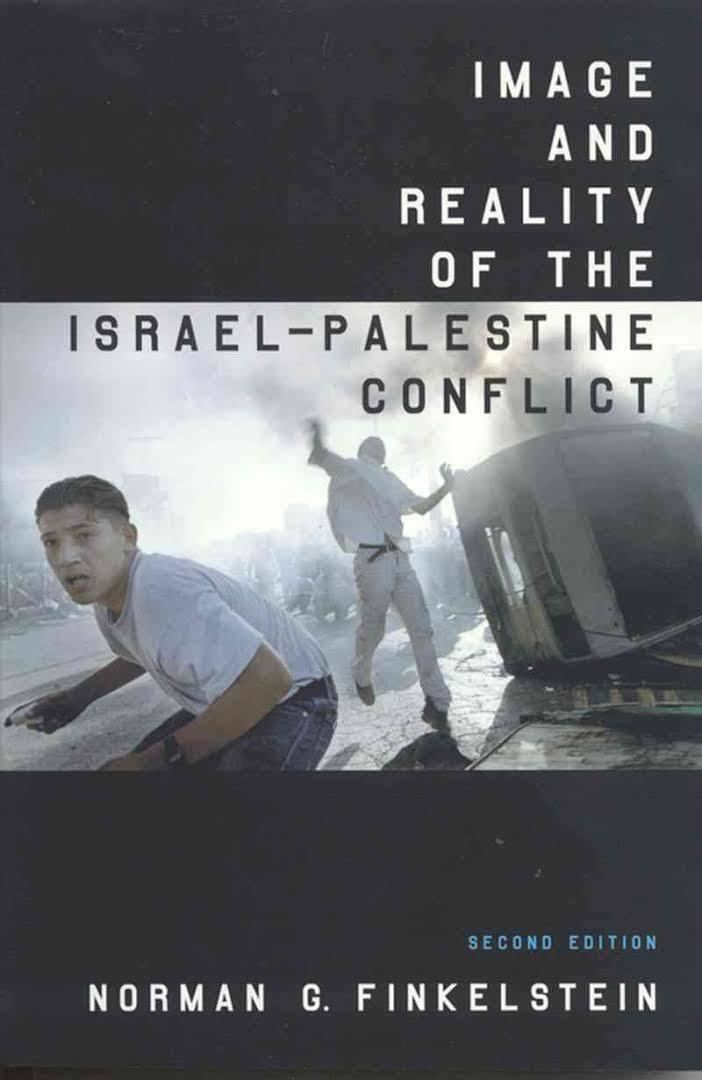8.6 /10 1 Votes8.6
Language English Media type Print | 4.3/5 Goodreads Publication date 1995 Originally published 1995 | |||||||||||||||||||||||||||||||||
 | ||||||||||||||||||||||||||||||||||
Similar Norman Finkelstein books, Arab–Israeli conflict books | ||||||||||||||||||||||||||||||||||
Image and Reality of the Israel–Palestine Conflict is a non-fiction book by Norman G. Finkelstein, first published in 1995. It is a study of the Israeli–Palestinian conflict. Finkelstein examines and scrutinizes popular historical versions of the conflict by authors such as Joan Peters, Benny Morris, Anita Shapira and Abba Eban. The text draws upon Finkelstein's doctoral political science work. The 2003 revised edition offers an additional appendix devoted to criticism of Michael Oren's 2002 bestseller Six Days of War: June 1967 and the Making of the Modern Middle East.
Contents
Finkelstein, expanding upon his doctorate thesis, writes that the modern Zionist historical tradition is based on a series of ideologically-charged systematic biases, all of which face considerable problems when measured up with the actual record in his view. For example, he specifically refers to the Palestinian exodus before Israeli independence and the purported causes. Finkelstein credits Zionist military aggression upon Palestinian villages and calls for a transfer of populations as driving Palestinian refugees out of their lands, rather than a voluntary exodus occurring mixed in with orders to leave from Arabic leaders and other factors as Israeli historians have written. He goes into detail on issues such as Israel's exploitation of water rights.
Supportive reviews appeared in publications such as Foreign Affairs, The Guardian and the London Review of Books. Critical reviews drawing problems with Finkelstein's historical work appeared in publications such as the Middle East Quarterly.
Critique of "From Time Immemorial"
In the footnotes of Chapter 2: “A Land Without a People”, Finkelstein remarks upon the 'scholarly apparatus' of "From Time Immemorial".
Peters makes sixty explicit references to Jacob de Haas's 1934 popular 'history' of Palestine, eight to an entry in the 1911 edition of the Encyclopedia Britannica, nine to Ernst Frankenstein's 1942 tract, Justice for My People, eight to the 'works' of the former chair of the American Christian Palestine Committee (Cad Hermann Voss), twenty-one to Samuel Katz's Battleground: Fact and Fantasy in Palestine, etc., etc. These 'sources' have the combined scholarly weight of a classic comic book.
Yehoshua Porath's standard two-volume work on the origins of Palestinian nationalism receives no mention in a book that devotes more than a few pages to this theme. Peters makes no reference to Erskine Childers's classic research on the 1948 Palestinian Arab exodus from Israel in her treatment of this topic. The findings of both authors completely contradict Peters's conclusions, conclusions that, in actuality, are nothing more than a rehash of the oldest and most tired Zionist apologetics without a shred of new evidence to support them.
Reviews and reception
Noam Chomsky remarked in The Guardian that he found the book to be "the most revealing study of the historical background of the conflict"
London Review of Books published a review stating that the book served as "both an impressive analysis of Zionist ideology and a searing but scholarly indictment of Israel's treatment of the Arabs since 1948."
William B. Quandt, in a short review in Foreign Affairs, praised the book as "required reading in the continuing war of the historians."
The Middle East Quarterly ran a highly critical review by Daniel Pipes, who stated that "Finkelstein hates the State of Israel with a venom" and provides nothing worth reading since Finkelstein "dwells obsessively with Israel's faults and shows no interest at all in Arabs". Pipes specifically pans how Finkelstein "time and again compares Israelis to Nazis, and on the most minor of pretexts", which Pipes sees as "the most noxious aspect of Image and Reality".
Historian Avi Shlaim remarked that the "book makes a major contribution to the study of the Arab-Israeli conflict which deserves to be widely read, especially in the United States.”
